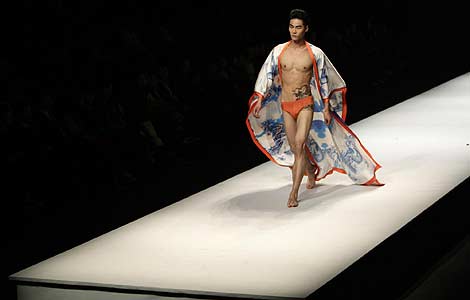Grand designs of Chinese manufacturers
Updated: 2011-11-04 11:04
By Jing Ji (China Daily European Edition)
|
|||||||||
To Lu, and many other private-sector entrepreneurs in the Yangtze River Delta, that recession was nothing short of a siren call that has woken them to the reality of over-dependence on OEM work. The seemingly inexhaustible supply of low-cost labor had "lulled us into believing that the good times would last forever", Lu says.
Not anymore. The recession hit at a time when labor costs and raw material prices were on the rise, further trimming the manufacturers, already narrow profit margins. Official figures show that manufacturing workers' wages have risen at an average double-digit rate in the past several years.
Running out of options, Lu talked his partners into trying something new to save their business. The company began developing its own brands in 2009 to tap the domestic market. Before then, spending on product development, mainly to find ways of cutting costs, accounted for less than 1 percent of total expenditure. Now, "we have budgeted at least 3 percent, or 2 million yuan ($316,000, 230,000 euros), a year for product and brand development", Lu says.
For that, the company looked to Shanghai for help. It started off by seeking advice from design institutions such as the University of Shanghai for Science and Technology (USST). But "we realize that if we are serious about developing our own brands, we will have to hire experts in commercial design and marketing", Lu says. "We cannot skimp on such expenses," he says.
Competition in China's luggage industry is extremely fierce, according to experts. It's crowded by a host of foreign brands selling products that are made in China at highly competitive prices.
Lu says that he aims to carve out a share of the niche market for young consumers who are more appreciative of appearance and style than established brand names. For example, the company came up with an idea of customizing its more up-market Baoli brand by accepting requests to print a portrait of the customer on the outer surface of the suitcase. The company also has another brand, Julong, that targets the mass market.
The idea has become something of a hit in secondary cities and rural townships. Lu says that many of those who warmed to the idea of having their portraits printed on their luggage are newly-weds going on honeymoon or students heading off to study overseas. "Customer-oriented design is gaining traction in the markets in Europe and the United States," says Lu. "We hope that we can make a profit with this new idea."
Other than marketing "gimmicks", the company has employed the services of USST to design more durable products. "They (the university designers) are making our cases lighter, prettier and more user-friendly," says Lu.
But to compete on quality alone is going to be an uphill fight because Chinese consumers have a bias toward foreign brands that is hard to change. "Customer-oriented design is still going to be the key to getting a bigger share of the market," says Lu.
And that's not going to be easy either, because of the highly diverse tastes of Chinese customers in the country's many different regions, says Wang Yang of the Kiefezapfzen Design Studio in Shanghai. Although she says her dealings with clients have mostly been pleasant and productive, "there were times when we found to having to stand firm and defend our designs which clashed with our clients' perceptions of the market," she says.
Wang says that clients that have been exposed to a foreign marketing culture are the easiest to work with because they are ready to accept the innovative ideas needed to compete with foreign brands in the domestic market. For instance, "we have a good relationship with a company that manufactures bathroom accessories for many years, because its manager is forward thinking and innovative," Wang says. "He (the manager) frequently travels abroad and closely follows the latest trends in bathroom accessories," she says.This client, she says, has agreed with some of her more avant-garde designs.
A growing number of Chinese manufacturers are beginning to realize that risk-taking is part of the brand-building process. "You can never know for sure if the product you spent months, or even years, developing will become a hit," she says. "It's not like OEM when you can work out everything down to the last dime," she says.
Wang recalls that she once had a "terrible time" convincing a manufacturer of stationery products to improve the design of his best-selling line of pens to improve his profit margins. The manufacturer didn't see the need to go through the trouble and expense because he had no problem selling millions of the pens to buyers from around the world.
Last year, the manufacturer came to Wang for help. Dwindling overseas demand had toppled his tried and trusted business model built on economies of scale. "He now sees the need to maximize his profit margins by selling fewer, but more expensive, pens," Wang says. "He has seen the light."
Qiu Yue in Shanghai contributed to this story.











